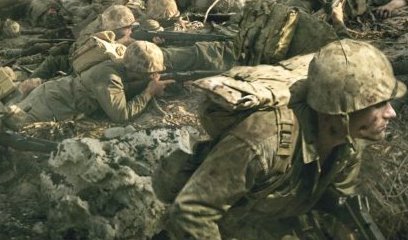During spring break, episode four of HBO’s “The Pacific” chronicled the toll that the constant monsoons took on the soldiers stationed in Cape Gloucester. Tensions ran high as the gloomy rain persisted day after day with no relief in sight, eroding the spirits of the men stationed in the jungle. One soldier wrote in his diary that, with no Japanese soldiers to fight, the only thing to survive against was the jungle itself. The show’s main protagonist, PFC Robert Leckie, developed a case of nocturnal enuresis (bedwetting) and was sent to a rehab facility to recover. There, he witnessed firsthand how various soldiers crumpled under the mental strain as they recovered in the rehab facility.
This episode stays true to tradition by focusing on the details of military life, rather than graphic battle scenes. The episode, for instance, features Eugene “Sledgehammer” Sledge, an Alabama boy restricted from the Marines due to heart murmur. He is given another chance by a doctor returning to the camp near Peleliu, along with Leckie.
We follow the rookie, Sledge, as he experiences his first combat, bringing him face-to-face with the atrocities of war. With him is a slightly mentally disturbed fellow soldier, who presents a shocking contrast to Sledge’s inexperience. One of the most jarring scenes of the episode is when Sledge’s disturbed comrade begins cutting the teeth out of a fallen Japanese soldier in order to possess the gold in the dead soldier’s fillings as Sledge looks on in horror.
As my roommate and I watched this scene, he shuddered with horror and muttered a disgusted “Wow.”
Viewers with weak stomachs should be cautious when approaching this episode, as the battle to take the beach at Peleliu is much more intense than in past weeks. In their endeavor to portray the reality as well as the brutality of war, co-producers Steven Spielberg and Tom Hanks spend more time showing the emotion leading up to and during the battle, rather than in the battle itself. This is where “The Pacific” truly shines, giving its viewers a realistic look at historical events underscored by incredible emotional depth.







